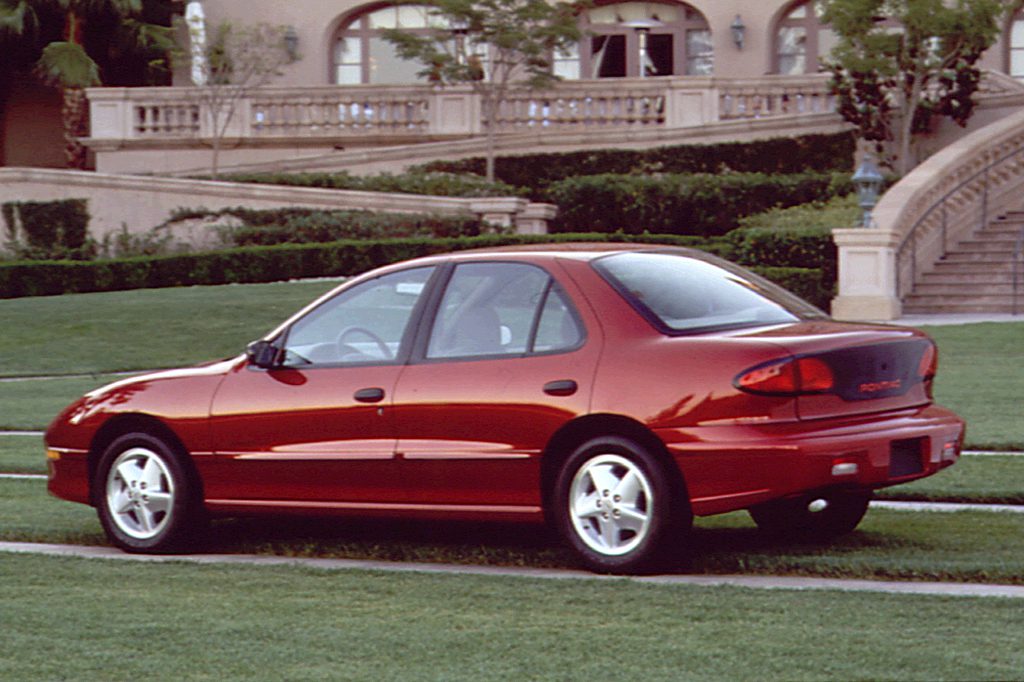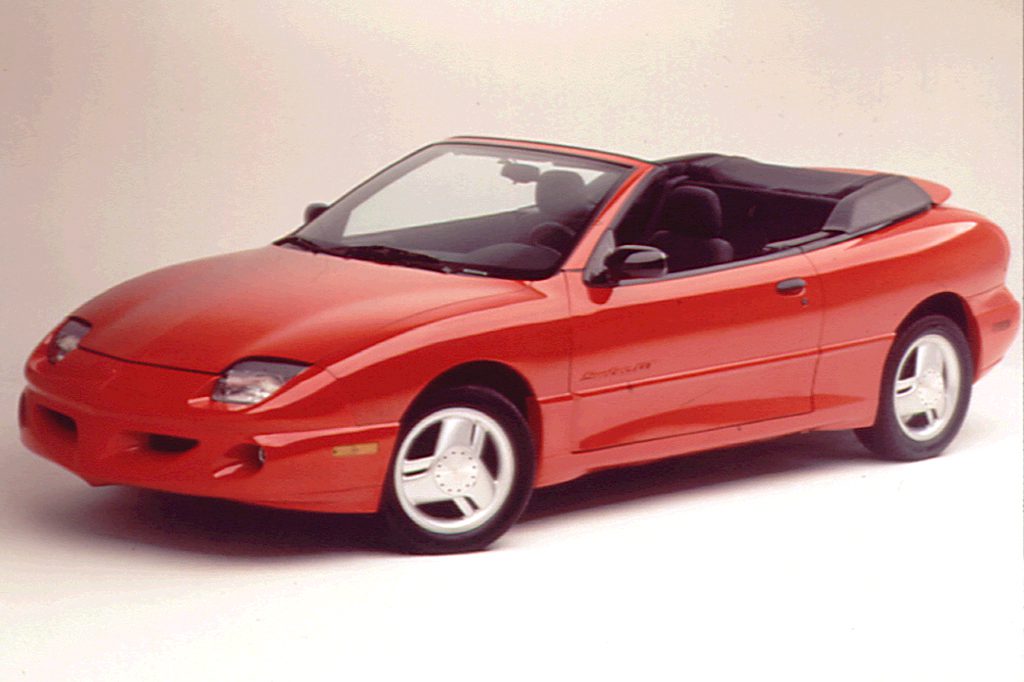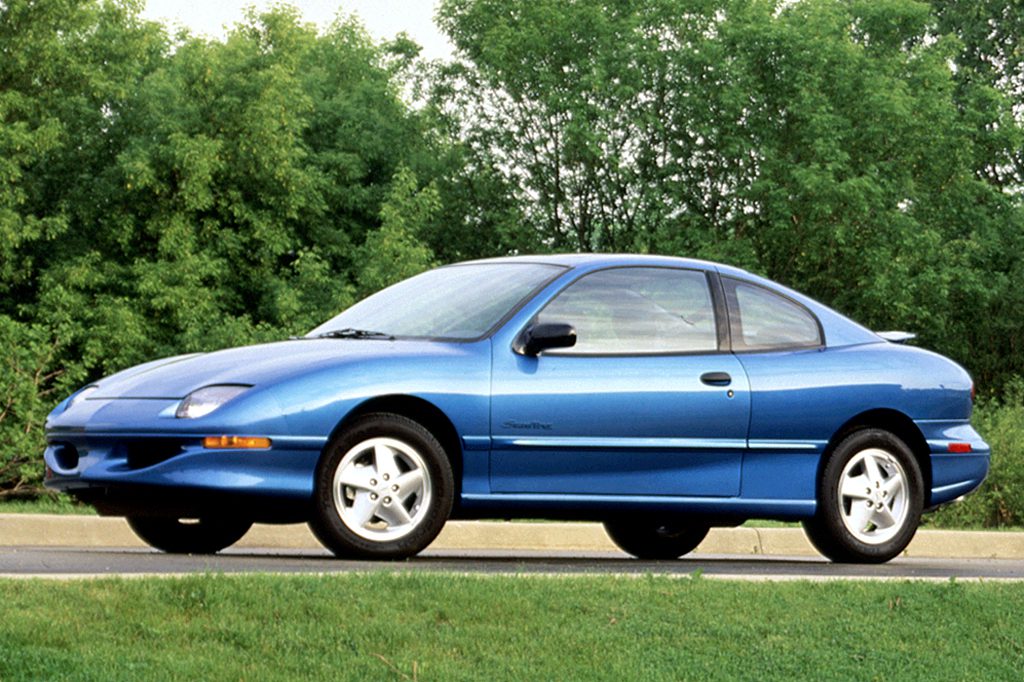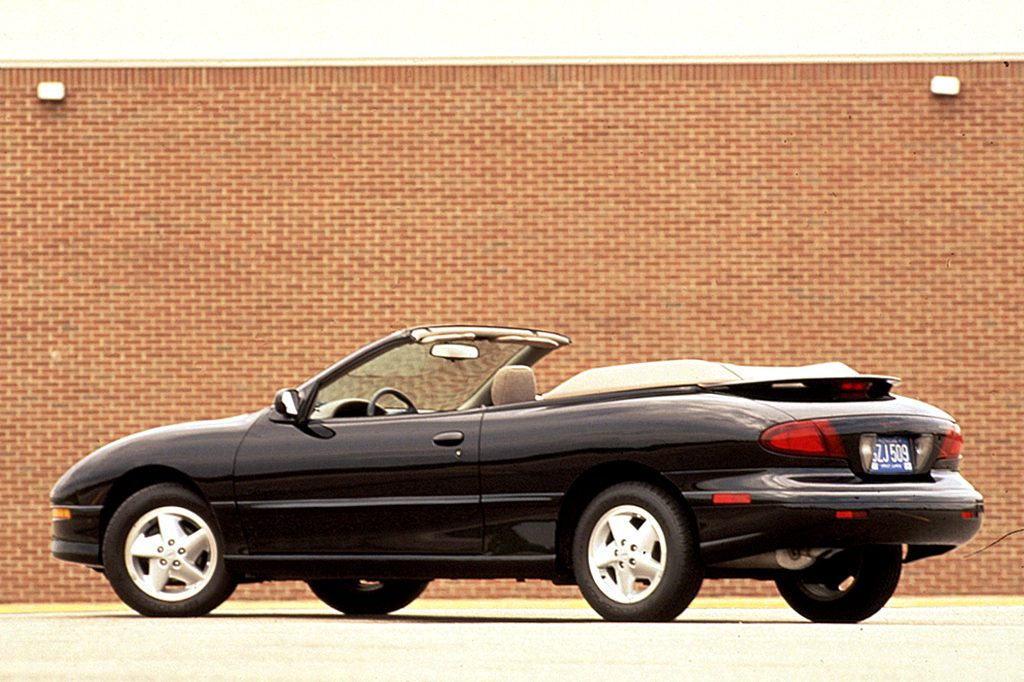| Compact car; Built in USA |
|
|
| Good condition price range: $1,400 – $4,400* |

1996 Pontiac Sunfire SE 2-door coupe

1995 Pontiac Sunfire SE 4-door sedan

1996 Pontiac Sunfire GT 2-dor convertible

1997 Pontiac Sunfire SE 2-door coupe

1997 Pontiac Sunfire SE 2-door convertible
| Pros: |
|
| Cons: |
|
Well-equipped when new, Sunfires make good choices in the subcompact league. Except for sportier styling touches from Pontiac, however, differences between Sunfires and Cavaliers are modest.
Overview
Pontiac shelved its Sunbird subcompact after 13 years and launched a new Sunfire for 1995, sharing its front-drive chassis and mechanical components with Chevrolet’s Cavalier. Dual airbags and antilock brakes were standard, along with a tachometer and a tilt steering wheel. At first, Sunfire was available as a 4-door sedan and a coupe. Later in the season came a convertible and a sportier GT coupe. SE models used a 2.2-liter 4-cylinder engine, rated at 120 horsepower. A 150-horsepower, 2.3-liter Quad 4 with dual-overhead camshafts was standard in the GT, optional in SE. A 5-speed manual transmission was standard; 3-speed automatic transmission optional with the 2.2-liter, 4-speed automatic with the Quad 4.
Yearly Updates
| 1996 Sunfire Replacing the Quad 4, was a new Twin Cam 2.4-liter 4-cylinder. Also, traction control became standard on Sunfires with 4-speed automatics. Daytime running lights were installed, too. |
| 1997 Sunfire A 4-speed automatic now became standard on the convertible; no more manual shift. The soft top also gained intermittent wipers, a defogger for the glass rear window, and standard cruise control. |
| 1998 Sunfire No changes were made to Sunfire for ’98. |
| 1999 Sunfire Convertibles moved from SE to GT trim for ’99. Other models continued unchanged. |
| 2000 Sunfire Sunfires earned subtle cosmetic changes, including revised lower bodyside trim and a new rear fascia with round back-up lamps. GTs got a reworked nose with integral fog lamps. A revamped console held two cupholders and a padded center armrest. GTs gained a leather-wrapped steering wheel, shift knob, and parking-brake handle. Automatic-transmission models got a lighted console shift indicator, and a Monsoon audio system became available. Convertibles were dropped during the model year. |
| 2001 Sunfire New standard equipment for 2001 included an in-trunk emergency release, cassette player, and a rear spoiler on coupes. |
| 2002 Sunfire A 140-hp twincam 2.2-liter 4 cyl replaced a 150-hp 2.4 after the start of ’02 production. Also for ’02, the SE got a standard tilt steering wheel (the GT already had it) and both gained a trunk release switch for the driver. |
| 2003 Sunfire Sunfire drops its sedan for 2003, but the surviving coupes get first-time availability of front side airbags. The GT trim level is also dropped, so the line is now based on an SE model that inherits the GT’s 140-hp 4 cyl as its only engine. A restyled nose, revised rear-end appearance, new interior trim, rear center shoulder belt, retooled dashboard, and XM satellite radio are other changes for ’03 |
| 2004 Sunfire The Sunfire received only minor trim changes in 2004. |
| 2005 Sunfire For Sunfire’s last season, a Sport Appearance Package option was added. It included 16-inch chrome wheels, firmer suspension, sport interior trim, and chrome-tipped dual exhausts. |
